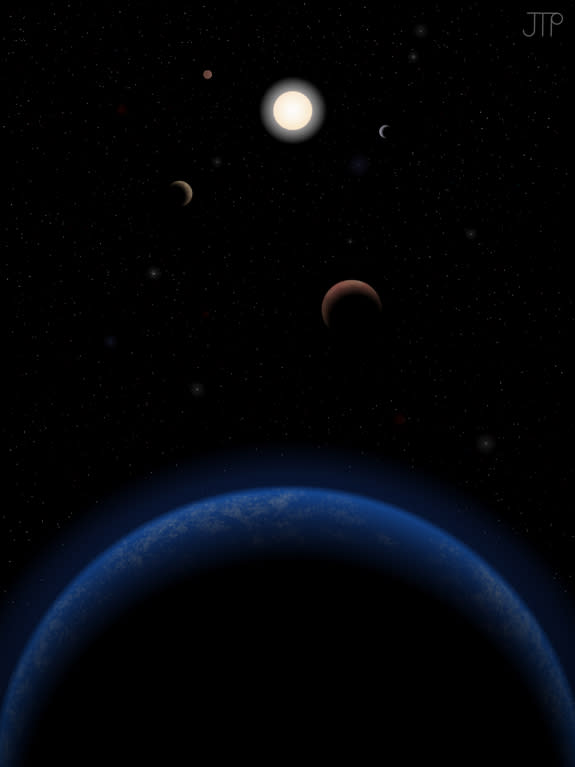 Science and Weather
Science and WeatherAstronomers may have found nearest habitable planet less than twelve light years from Earth

Exciting news today, as an international team of astronomers revealed that they may have discovered the nearest habitable planet outside of our solar system.
Tau Ceti, which is only about 12 light years away from us, is a star very much like our own. It is a yellow G-type star, a bit smaller than the Sun (78% of its mass) and a bit less active (thus fewer solar flares), and although Alpha Centauri A is considered the closest Sun-like star to us, it is part of a binary star system, Tau Ceti has the distinction of being the closest single Sun-like star to us. As a result of this distinction, Tau Ceti has been under heavy scrutiny by astronomers for years, including both planet-hunting and SETI (Search for Extra-Terrestrial Intelligence) missions, and it is well-known in the field that, while no planets had been detected before this, the star is surrounded by a dense disk of rocky and icy debris.
The team, with members from Australia, Chile, the United Kingdom and the United States, used the data from over 6,000 observations of the star, from three different instruments, to construct an incredibly accurate computer model of the star. The goal was to test new techniques of filtering out noise from observations, to detect the signals from small, terrestrial planets, like Earth, Venus and Mars.
[ Related: NASA ‘Europa Clipper’ may someday buzz by Jupiter’s icy moon ]
"We chose Tau Ceti for this noise modelling study because we had thought it contained no signals," said Hugh Jones, a professor of Astronomy and Astrophysics at the University of Hertfordshire. "And as it is so bright and similar to our Sun it is an ideal benchmark system to test out our methods for the detection of small planets."
However, when the team used this new modeling technique on the star, they actually found planets in orbit around it — and not just one, but five planets, in fact. Estimates place the five worlds at sizes between two times and six times the mass of Earth — making it likely that they are all rocky, terrestrial worlds — with orbital periods of between 14 days and 640 days. One of the planets, which is roughly five times the mass of Earth, orbits within Tau Ceti's habitable zone (the 'ring' around the star where it is just warm enough for there to be liquid water), making it the smallest known world orbiting in the habitable zone of a Sun-like star.
This is a major find for two reasons — Tau Ceti's proximity to us and the implications of the find with regards to how common planets are in the universe.
"Tau Ceti is one of our nearest cosmic neighbours and so bright that we may be able to study the atmospheres of these planets in the not too distant future," said James Jenkins, an astronomer from the Universidad de Chile and Visiting Fellow at the University of Hertfordshire. "Planetary systems found around nearby stars close to our Sun indicate that these systems are common in our Milky Way galaxy."
[ Related: 30-year study shows hypergiant star going through rare stage of evolution ]
"This discovery is in keeping with our emerging view that virtually every star has planets, and that the galaxy must have many such potentially habitable Earth-sized planets," said Professor Steve Vogt from the University of California Santa Cruz Department of Astronomy and Astrophysics.
"They are everywhere, even right next door! We are now beginning to understand that Nature seems to overwhelmingly prefer systems that have a multiple planets with orbits of less than one hundred days. This is quite unlike our own solar system where there is nothing with an orbit inside that of Mercury. So our solar system is, in some sense, a bit of a freak and not the most typical kind of system that Nature cooks up."


